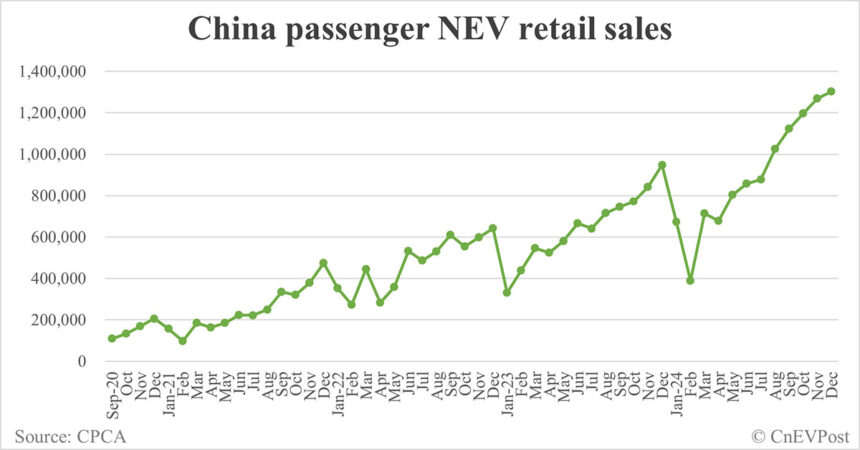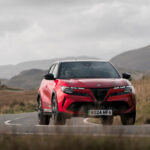China’s retail sales of new energy vehicles (NEVs) reached a new high in December, with passenger NEVs totaling 1.302 million units, marking the fifth consecutive month above 1 million. This represents a 37.5 percent increase year-on-year and a 2.6 percent increase from November. However, the contribution of NEVs to passenger car sales declined further, with a penetration rate of 49.4 percent in December, the first time it has fallen below 50 percent since June.
Battery electric vehicles (BEVs) accounted for 58.5 percent of all NEV retail sales in December, with 762,000 units sold, up 27.2 percent from the previous year. Plug-in hybrid electric vehicles (PHEVs) contributed 32.2 percent of NEV retail sales, with 419,000 units sold, while extended-range electric vehicles (EREVs) made up 9.4 percent, totaling 122,000 units. Combined sales of PHEVs and EREVs reached 541,000 units in December, up 55.9 percent year-on-year.
In terms of overall passenger car sales in China, including sedans, SUVs, and MPVs, a record 2.635 million units were retailed in December, a 12.0 percent increase year-on-year and an 8.7 percent increase from November. This growth rate outpaced that of NEVs, indicating that gasoline vehicle sales are seeing faster growth rates, likely due to government trade-in policies.
Despite the decline in NEV penetration at retail, the wholesale sales of passenger NEVs in China reached a record 1.512 million units in December, a 35.6 percent increase year-on-year. However, NEV penetration in wholesale fell below 50 percent, standing at 49.2 percent. Chinese NEVs accounted for 67 percent of wholesale sales, while luxury brands made up 36 percent and mainstream joint venture brands comprised 4.3 percent.
Furthermore, China’s passenger NEVs exports totaled 122,000 units in December, a 21.5 percent increase year-on-year. BEVs contributed 62 percent of NEV exports, with A0- and A00-class BEVs accounting for 45 percent of exports. Overall, the NEV market in China continues to show strong growth, but the declining penetration rate at retail highlights the need for continued government support and incentives to drive adoption.







